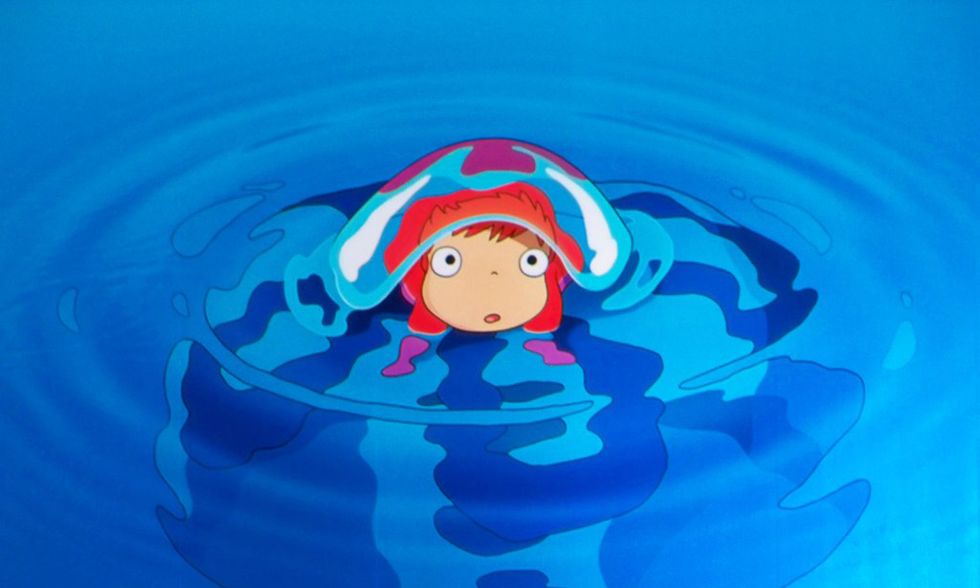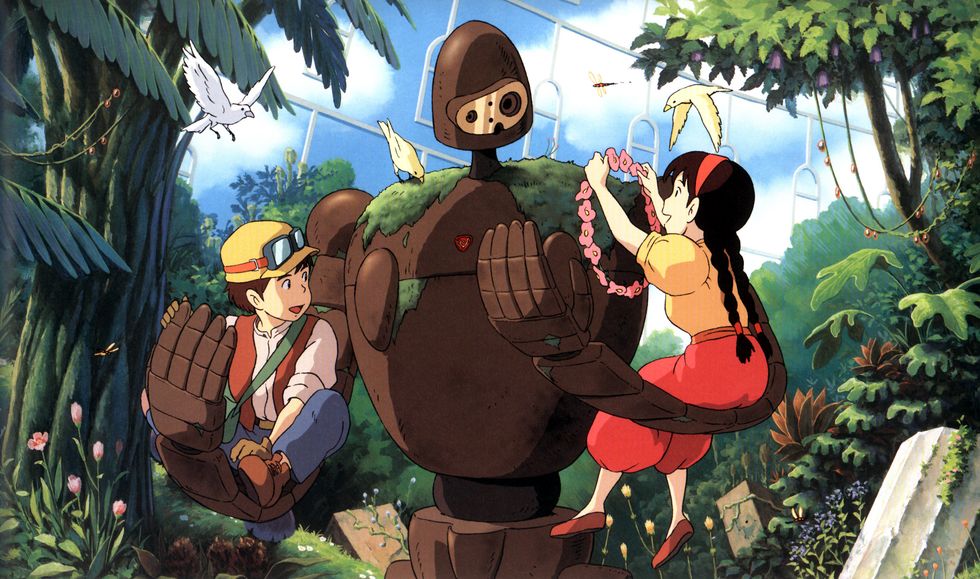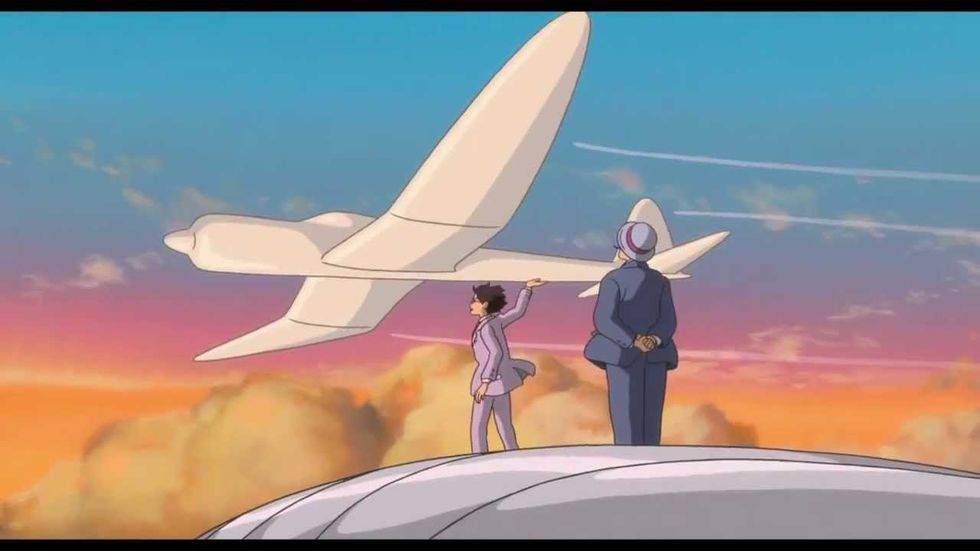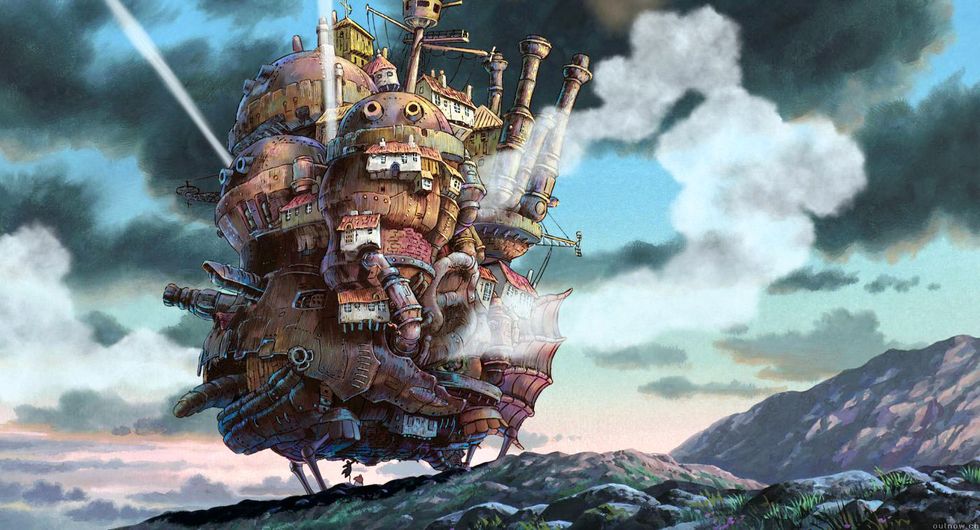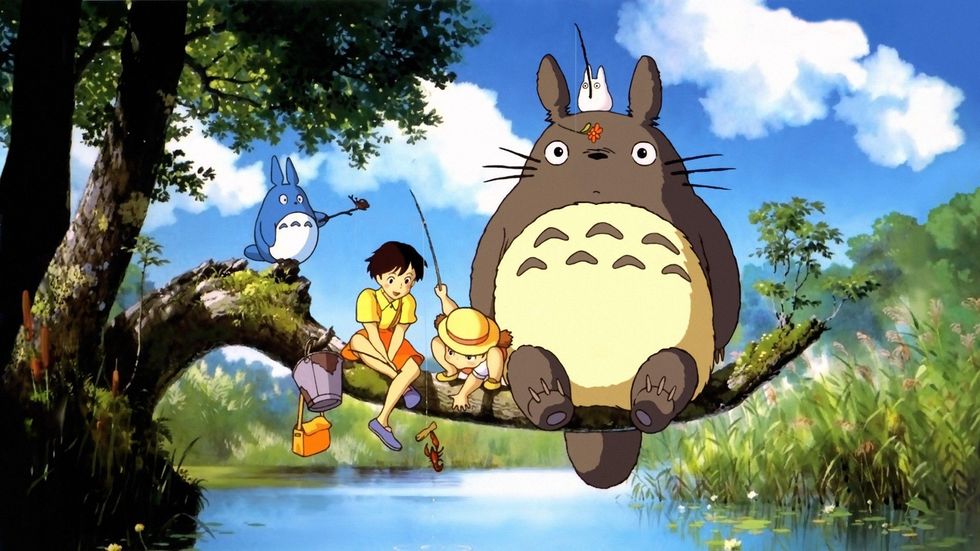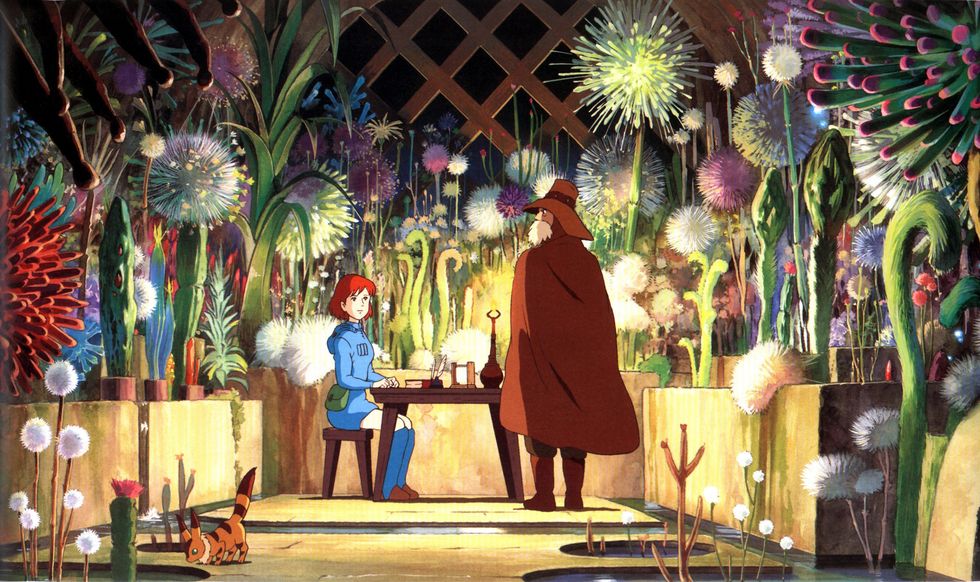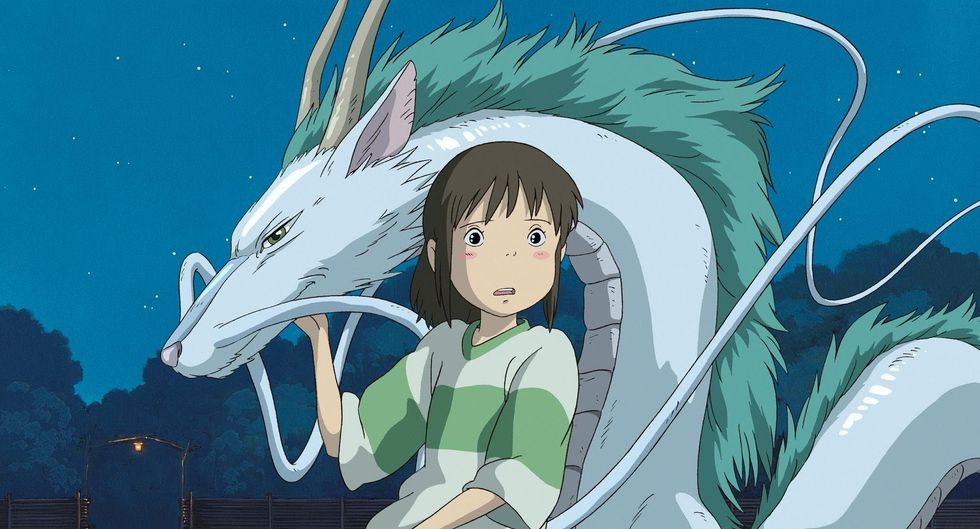Dubbed the "Disney of Japan", Hayao Miyazaki is known for making animated films that have no age limits. His films feature very distinctive and beautiful artwork with a muted but vibrant color palette. Once you watch a Miyazaki film, you will definitely recognize his other ones.
If you haven't seen any or just some of these films, I wholeheartedly encourage you to watch the ones you haven't. And even if you have seen all of them, definitely re-watch them- maybe even consider having a Miyazaki movie marathon with your friends!
Here is my definitive ranking of (some of) Hayao Miyazaki movies:
9. Ponyo (2008)
Ponyo reminds me of a younger version of Ariel from the "Little Mermaid" except she doesn't make a pact with an evil witch, is a lot younger and can talk. The movie definitely emphasizes the father/daughter dynamic between Ponyo and her father, who is some kind of scientist living underwater. I place this at the bottom of the list because although this movie is very beautiful, vibrant and cute, Ponyo was somewhat annoying at times.
8. Laputa: Castle in the Sky (1986)
As the title indicates, this film is about the legendary flying city of Laputa. The main characters: Sheeta (on the right) and Pazu (on the left) set out to find this lost city and try to find Sheeta's connection to the city and Pazu's avengeance to prove that his father was right about the lost city. They clash against sinister government agents and sky-pirates--even just that sounds action-y.
7. The Wind Rises (2013)
6. Kiki's Delivery Service (1989)
5. Howl's Moving Castle (2004)
Although this is a popular favorite among many, I rated this movie a little bit lower. I felt that the though the story follows Sophie, a young plain girl who turns into an old grandma because of a curse and meets the handsome wizard, Howl, I thought that this movie was a little bit more lackluster than the other movies. Though the anti-war theme was very important, I thought that the romance overshadowed that a little bit too much in this film. The art was still on point though as with all of Miyazaki's other movies.
4. My Neighbor Totoro (1988)
Totoro has become a very iconic figure, having become the face of Studio Ghibli. Miyazaki really blends the real world and the magical world side-by-side. The two sisters, Satsuki and Mei, recently move to a new house in the country side for the sake of their mother who is recuperating from an illness. Again, this movie is a little bit different from the other MIyazaki movies because it doesn't have that much action. However, the day to day interactions that Satsuki and Mei have especially in the real world and with the magical creatures like Totoro or the catbus is definitely what keeps you interested.
3. Nausicaä of the Valley of the Wind (1984)
2. Spirited Away (2001)
This film has won the Oscar for Best Animated Feature, which is a testament to Miyazaki's incredible ability to convey the bildungsroman story that is not overshadowed by the other features of the film such as the magical elements and creatures in the story and one that many find very hard to do. Chihiro the main protagonist must face the witch Yubaba who has turned her parents into pigs. Chihiro learns the importance of identity and names, in addition to becoming more confident in herself.
1. Princess Mononoke (1997)
Although the main protagonists of Miyazaki's films are young girls, this movie features a male protagonist--Ashitaka, a young warrior prince who has been afflicted with a deadly curse. He searches the "forests of the west" to find a cure that will save his life but in doing so he finds himself in the middle of a battle between a group of rifle-toting ironworkers and the angry gods of the forest. Things get even more complicated when he meets the fiery Princess Mononoke, a young woman raised by wolves. Not only does this feature very haunting and violent scenes that really make you think about the world we live in today. This movie features a lot of nuanced characters, like Lady Eboshi of Iron town who seems to be the villain but that image gets complicated when you learn that she gives homes and jobs to people who would be considered the outsiders of society--prostitutes and lepers.
Do you agree with my rankings?
If not, how would you rank his films?


